MEMPHIS, Tenn. — In recent years, changes to Tom Lee Park and the Beale Street Landing project have drawn criticism from some Memphians. Some have complained about the all-new playground, and others are just tired of ongoing construction.
Nearly a century ago, Riverside Drive didn’t exist. In fact, it was a dump.
Downtown residents and businesses would toss their trash onto the bluffs. Memphians and barge sailors complained about the stench that festered by the river.
Worse yet, parts of the polluted riverside were eroding. Trash slipped into the Mississippi River, and land on the riverfront became less solid. In 1920, a railcar was sucked into quicksand due to the eroding riverbank, according to engineers in an article by The Commercial Appeal.

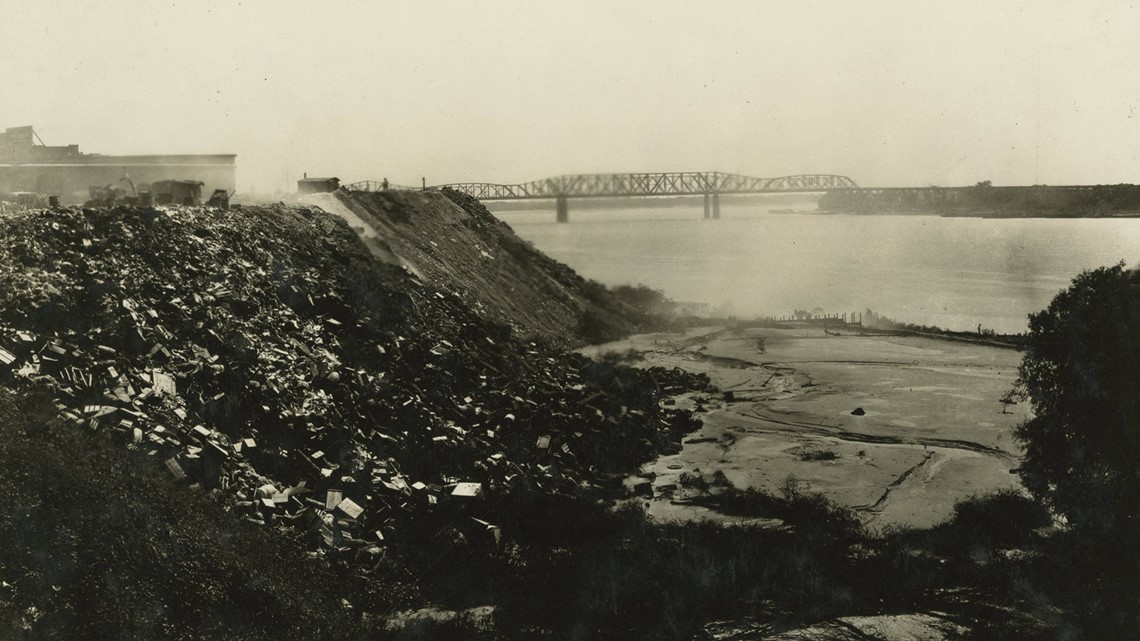
Erosion threatened all riverside property. Rail companies, property owners and government officials all decided something had to be done.
Overton, Crump and a new vision for the Memphis waterfront
In 1927, mayoral candidate Watkins Overton ran, in part, on improving the riverfront. After his election, Mayor Overton dreamt of not only stabilizing, but also beautifying the riverfront as a place to be enjoyed by all Memphians.
According to Overton in an autobiographical article in The Commercial Appeal, he stood with E.H. “Boss” Crump in Confederate Park, watching garbage trucks dump tin cans and other trash on the riverbank. Overton said from there, he and Crump thought of ways to improve the city's image to passing boat traffic.
That same year, city engineers came up with plans for Riverside Drive, but it would be costly to execute. The city applied for federal funding, but were initially denied.

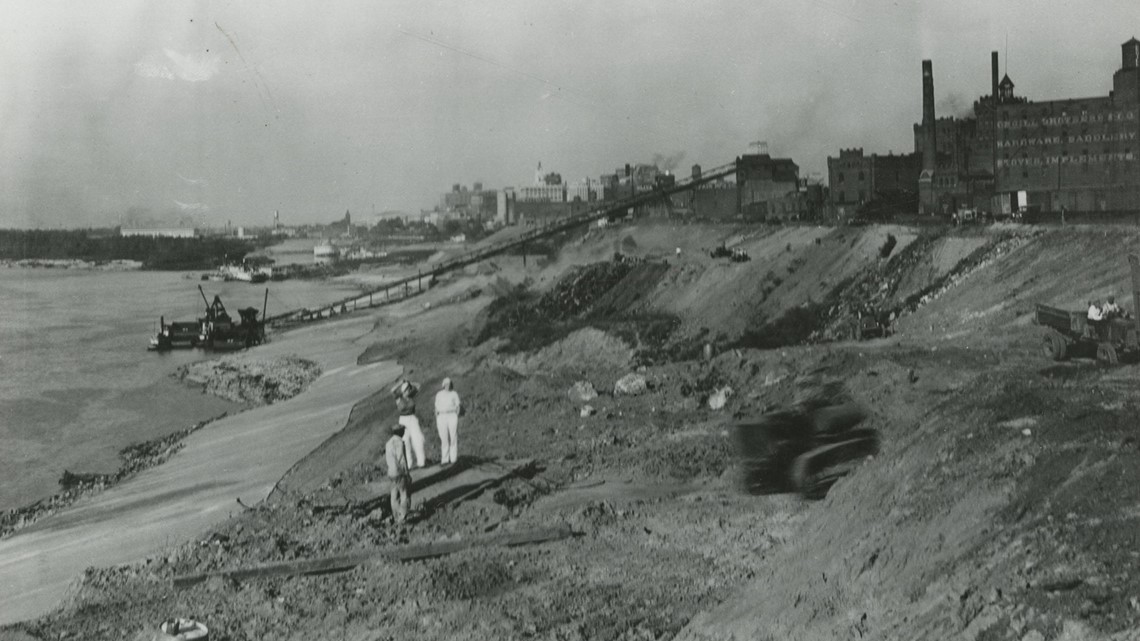
Regardless, they got started on the project. The harbor commission went to property owners on the riverfront and got not only permission to start work, but also funding to make it happen.
To aid the project, in 1930, the Memphis City Beautiful Commission was established by city ordinance with the goal of cleaning up the city. Memphis City Beautiful was the first beautification commission to be established in the United States.
Their first assignment was cleaning up the riverfront, which started being known as the “city’s front door.” Notably, Memphis City Beautiful was comprised entirely of women, who worked to clean up the riverbank and the city’s overall appearance.
How the "New Deal" helped propel the transformation forward
Through the Public Works Administration (PWA), a New Deal agency that hired job-seeking Americans for public works projects, Memphis was able to get the funds and workers to accelerate the construction of Riverside Drive.
The federal government provided $116,000 for the riverside project. The PWA also completely paid for the Wolf River, a tributary to the Mississippi, to be deepened—a $600,000 undertaking.

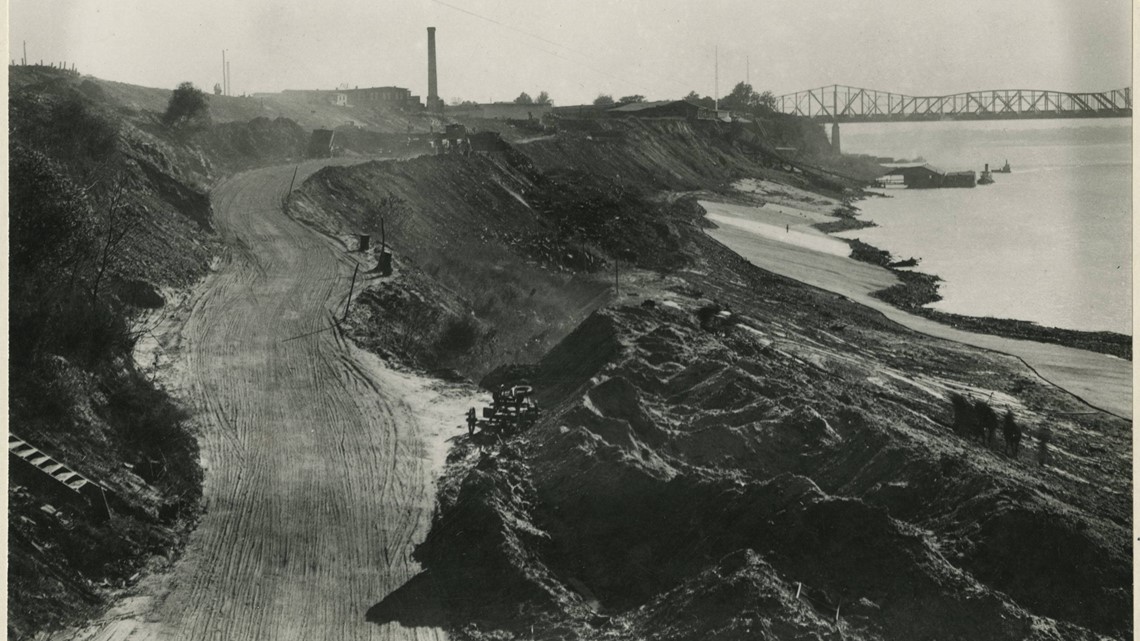
Sometime during the project, workers uncovered the previously mentioned railcar. Though, efforts to remove the railcar would be too costly and burdensome, so they just left it. Next time you’re taking a trip down Riverside, you might just be driving over that railcar!
You'll also be driving over a whole lot of 1920s garbage. Turns out, it was fundamental in stabilizing the eroding riverside.
The collection of cans, old car bodies and other trash kept the once shifting sands in place while still letting water flow out. With the sands kept in place, the erosion was stabilized, so workers just buried the trash.
Much of the dirt used in the project to fill in the highway was taken from excavations for the construction of the Sterick Building.

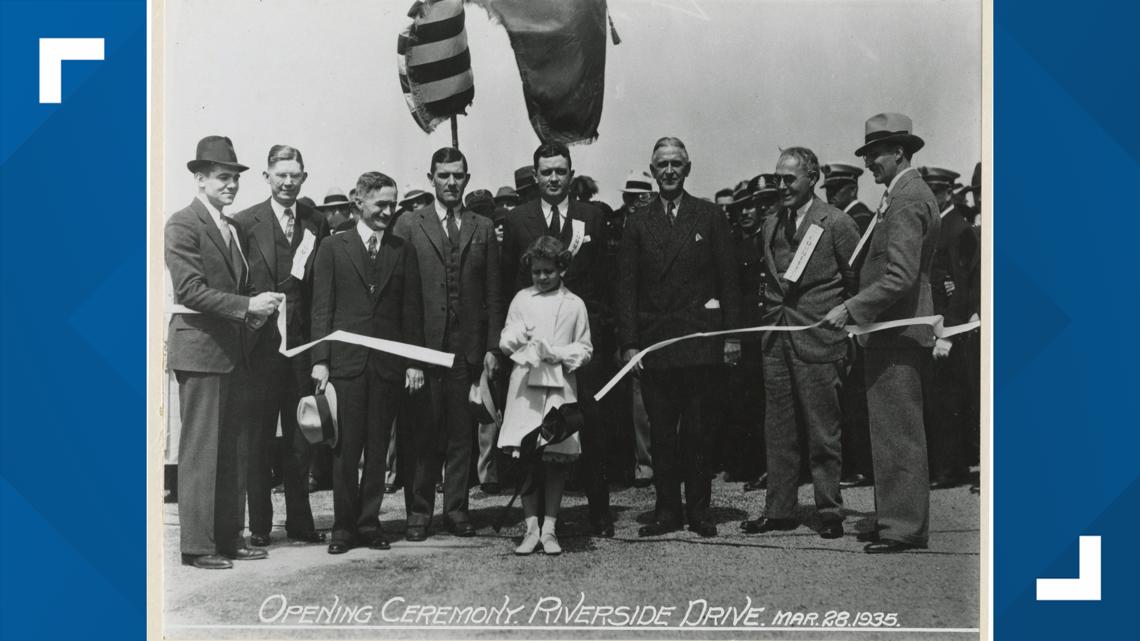
In the end, the project came out to $1 million−when adjusted for inflation, that would come out to about $22 million in 2022 dollars. Over 1 billion pounds of dirt was moved, and more than 110,000 square yards of sod was laid. That's over 17 football fields-worth of grass.
Once everything was set, Memphis City Beautiful Commission and the Men's Garden Club got to work planting flowers and native trees along the "natural parkway," executing the second half of Mayor Overton's plan—beautification.
Memphis City Beautiful's hard work paid off, even after the Riverside Drive renaissance. From 1948-1951, Memphis won the Ernest T. Trigg “Nation’s Cleanest City” award, making it the award’s only four-time winner.

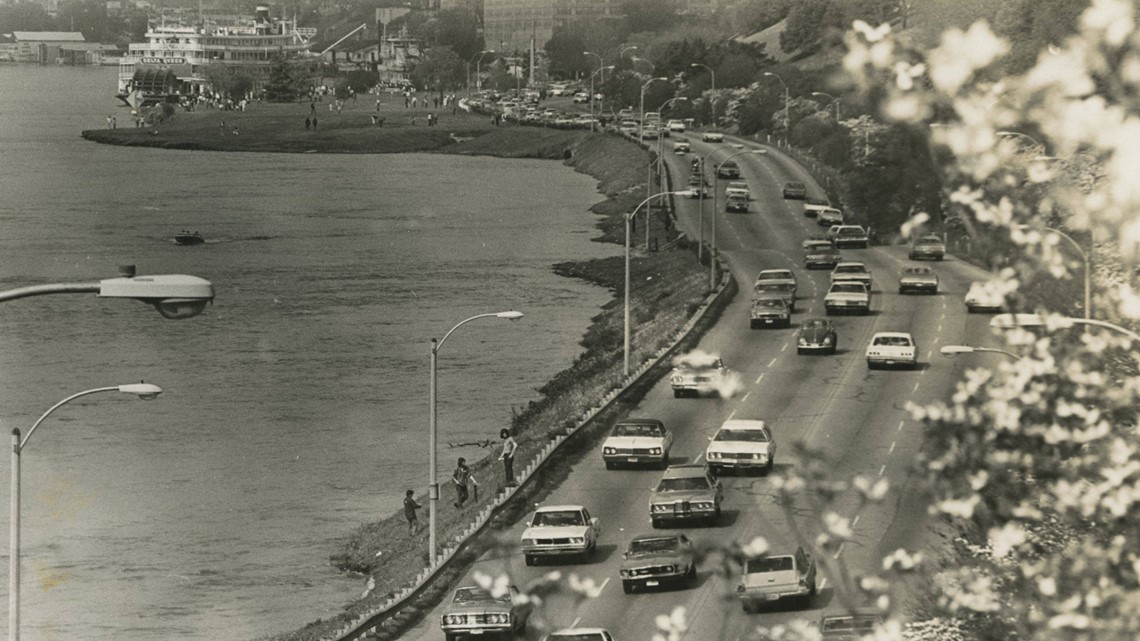
The complete transformation of Memphis' riverfront went from a dream to a reality in a little under a decade. Riverside Drive is a testament to what can be achieved when Memphis comes together—from the mayor's office to everyday people.
Riverside Drive's modern-day transformation

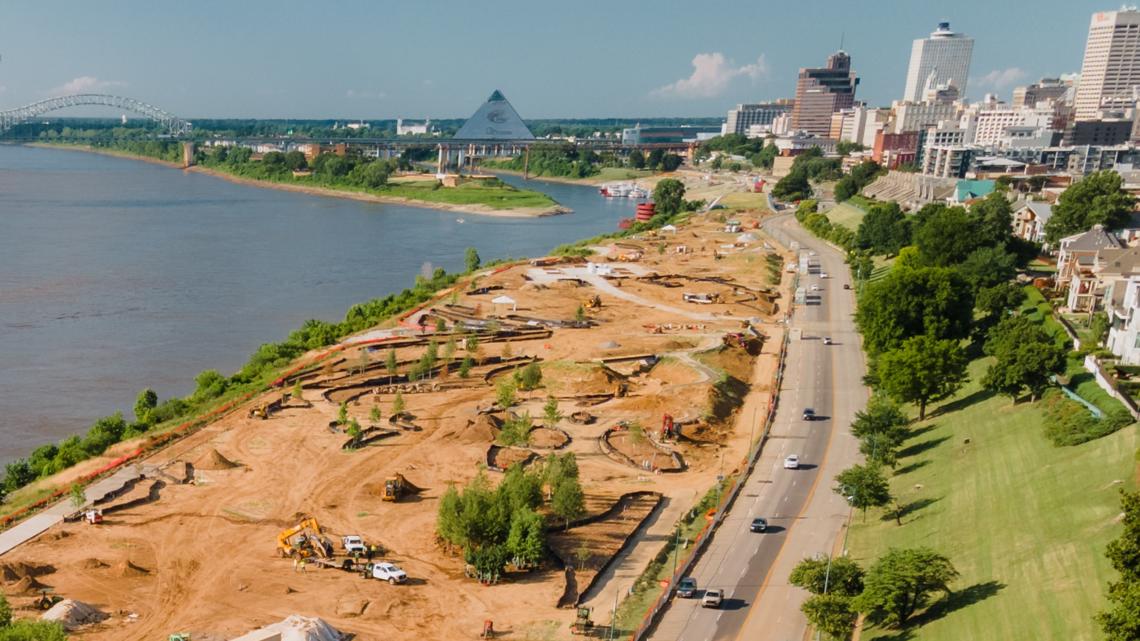
Today, the riverfront is going through an all-new transformation. While not as drastic as the 1935 process, the changes coming to Tom Lee Park seek to highlight the city's front door in a similar way.
The riverfront has become a permanent fixture for native Memphians and visitors. Many have enjoyed the view of the mighty Mississippi while seeing their favorite artists at Beale Street Music Festival in Tom Lee Park, though the future of that is up in the air.
There's few more beautiful sights than the natural wonder of a sunset and painted skies over the rolling Mississippi River, and when the sun sets, the Hernando de Soto Bridge puts on a show with the Mighty Lights.
No matter how you feel about recent or upcoming changes, we can all agree—Memphis' riverfront is in a much more fortunate place today than it was 100 years ago.



